A Canal Side Bike Ride to Bath
There are so many great places in the UK to explore on a bike, that I wonder why we don’t take more opportunities to visit them. It works out so much cheaper than going abroad and is so much more hassle free. No security checks at airportrs, no packing part dismantled bikes into travelling bags/boxes, no changing up currencies, etc, etc, etc.
At the beginning of June I cycled with one of my sons to Reigate Stn where we took the train to Reading. It took 1hr:5mins at a cost of £16. We then followed the National Cycle Route 4 from Reading to Bath and back with 3 overnight stops, one on the way out, one at Bath, and one on the way back. Two hundred, very interesting miles thru some of England’s scenic and historic past.
NCR 4 mainly follows the Kennett and Avon Canal. Approx 60% is along gravel paths, being mainly the original canal towpath, some of which is quite narrow and some with quite a rough surface. Better suited to mountain bikes rather than narrow tyred road bikes!
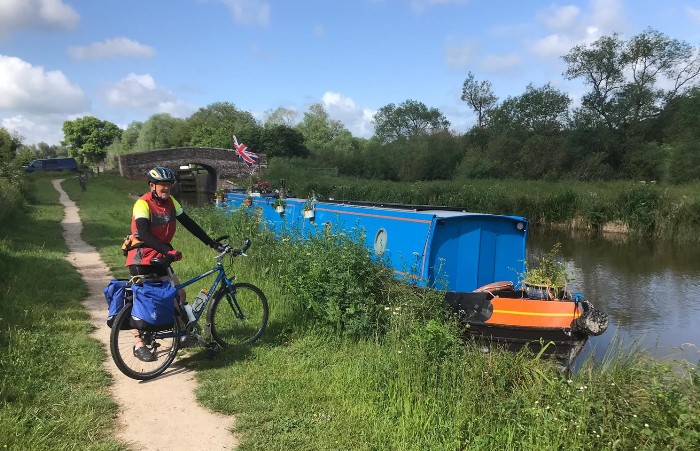
And about 40% is along some very scenic country lane with lots of thatched cottages and other memorials of old England.

Very little research or planning was required because there is a guide with pages of ample route notes, maps and much more, here at https://cycle.travel/route/kennet_and_avon
This is part of the (zoomable) map which shows our first afternoon’s ride, the 30 miles from Reading to Hungerford, where we stayed overnight.
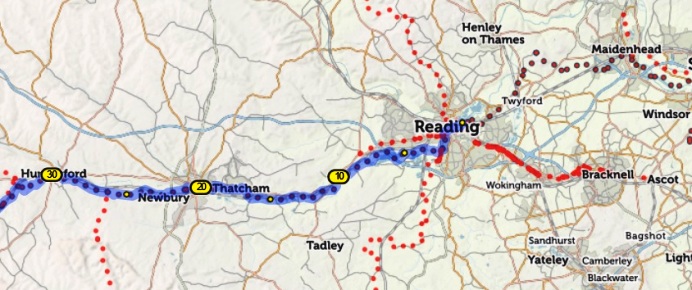
What makes this ride so different for us 21st century cyclists, pedalling along the towpath, is that it takes us back to a world that existed some 200 to 300 years ago. The canals and it’s heavily laden narrow boats were the motorways and artic lorries of that bygone age. And the ingenuity of the engineers and physical labour of the navvies who constructed this mammoth undertaking, is a demonstration of how the industrial revolution added the word “Great” to Britain!
After the hurly-burly of our busy roads it was a novel
experience to savour the slow pace of life on the canals.
At the very first lock that we came to, we stopped and watched as a barge tied
up to start the leisurely, sequenced, process of opening and closing the lock
gates to let the boat into the lock, then allow the water (in this case) to
lower to the next section of the canal so the gates at the other end of the
lock could be opened to allow it to continue its journey. As you can see from
the length of the huge levers, opening and closing the lock gates is a very
physically demanding job!
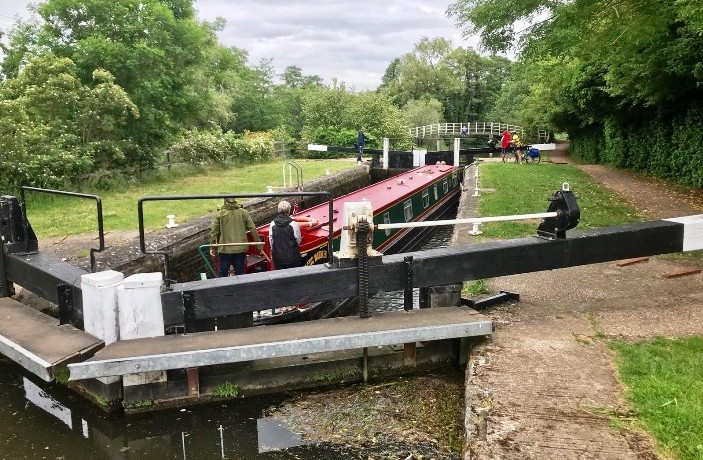
And there is not a lot of room to spare. The “captain,” who is controlling the
boat, is at the back end. He has to judge how far the front end is from the
lock gates, and the canal boats do not have brakes to stop them!
I was surprised at how many boats there are on the canal. The photo below is just a snap shot of what it was like along many parts of the canal.
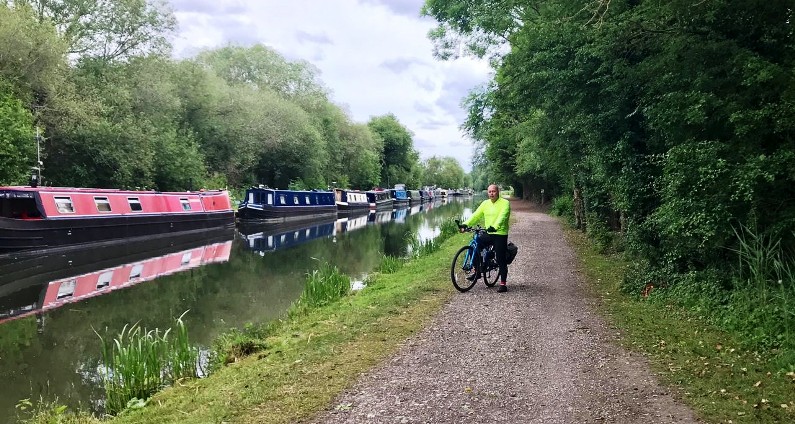
This was a great ride for nature lovers. We saw lots of ducks, Canadian geese, swans with their cygnets, also several herons and other birds out looking for their next meal.
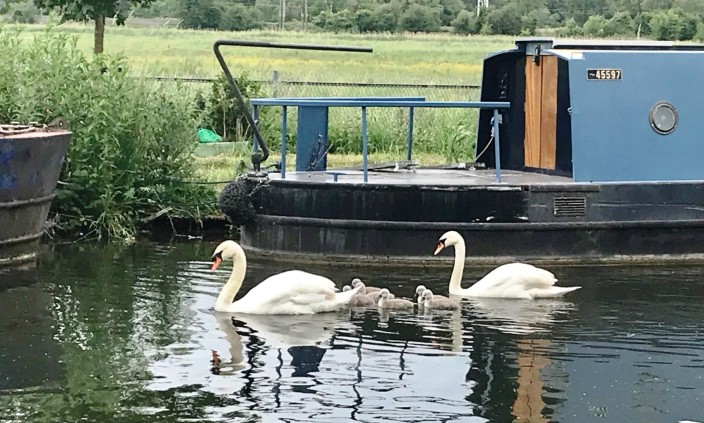
Pigs can’t fly – and neither can these!
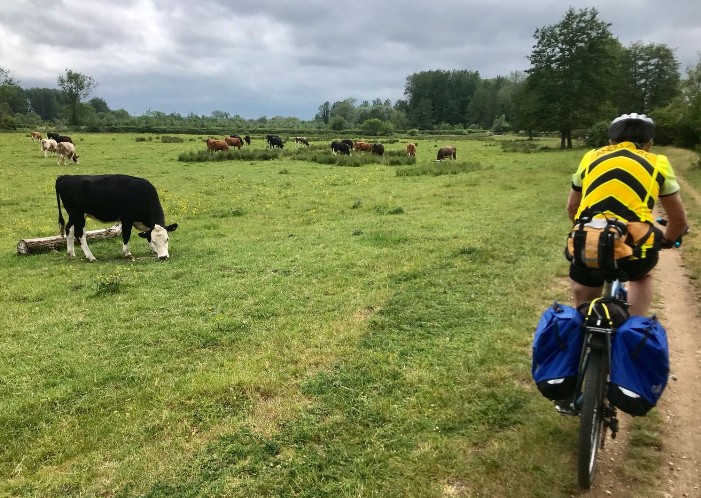
An extensive network of canals was built, from circa the early 1700s to the mid 1800s, after which the railway age took over mass transportation and the canals became obsolete. In very recent times these disused canals are being brought back to life as tourist attractions, being very popular with walkers, cyclists, and of course the boating fraternity.
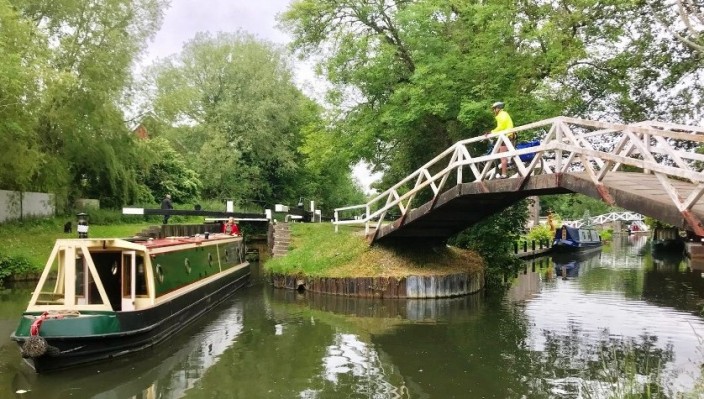
But no bike ride is complete without it’s tea stops, and although we had passed a couple of riverside pubs, it was the first riverside tearoom that we came to that got our custom, at Aldermaston Wharf. This tea room was owned by the K and A Canal Trust so deserved our custom. But the main reason was that although it was only about 10 miles from Reading it was just about to close for the day. The next tearoom at Thatcham was closed because it was a Sunday, so it was now or never for some tea and cake!
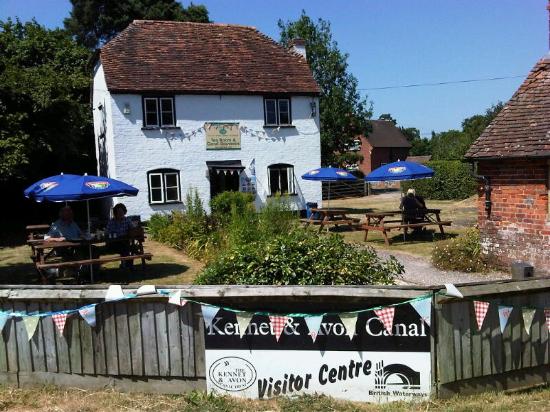
In it’s heyday Aldermaston Wharf was a busy trading place for goods arriving and departing via the canal. In more recent times Aldermaston became famous for it’s Atomic Weapons Establishment and the Ban the Bomb marches of the 1950s and 60s.

But the Aldermaston of the mid 20th century was another age and we were still travelling back in time to a now forgotten era. A few miles past Aldermaston we left the towpath for the next bit of our afternoon cycle ride, because NCR Route 4 continued , on nice smooth tarmac along some country lanes thru old world England , past thatched cottages and old pubs to our overnight stop at Hungerford.


The canal towpath does continue to Hungerford and onwards but due to the poor surface to cycle on, the NCR diverts to the country lanes which we followed, but for hard core MTBers , the option of continuing on the towpath is an option to arrive at Hungerford Wharf, shown below.
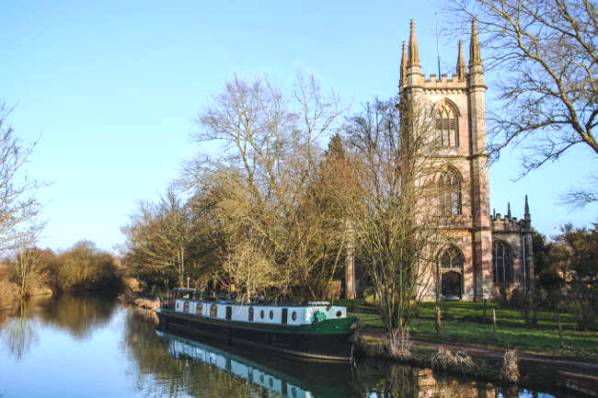
The next day we cycled the 60 odd miles to Bath, so more about our ride next week.
Des.
